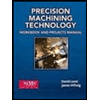B с 34 35 K L 30 34 Z 18 20 a) What is the cycle time of one finished chair? b) What is the possible daily output of this "process" if eight hours of processing time is available each day? c) Where is there likely to be WIP sitting idle in the process? Why? d) Is the process balanced? e) Given your output rate in part (b), what is the efficiency of the process? f) What is the flow time of the process? g) Suppose one worker does not show up for work. How would you reallocate the 9 tasks among the 8 workers who showed up to maximize productivity? (You can assume every worker knows how to perform every task). How is the daily output of the process impacted? What are some possible risks of reallocating work in this way?
B с 34 35 K L 30 34 Z 18 20 a) What is the cycle time of one finished chair? b) What is the possible daily output of this "process" if eight hours of processing time is available each day? c) Where is there likely to be WIP sitting idle in the process? Why? d) Is the process balanced? e) Given your output rate in part (b), what is the efficiency of the process? f) What is the flow time of the process? g) Suppose one worker does not show up for work. How would you reallocate the 9 tasks among the 8 workers who showed up to maximize productivity? (You can assume every worker knows how to perform every task). How is the daily output of the process impacted? What are some possible risks of reallocating work in this way?
Precision Machining Technology (MindTap Course List)
2nd Edition
ISBN:9781285444543
Author:Peter J. Hoffman, Eric S. Hopewell, Brian Janes
Publisher:Peter J. Hoffman, Eric S. Hopewell, Brian Janes
Chapter8: Computer Numerical Control
Section8.5: Introduction To Cnc Milling
Problem 7RQ: A programmable indexing fixture creates a fourth axis called a ________ __________ that is similar...
Related questions
Question
Plz answer a to g

Transcribed Image Text:PROBLEM 1: The following represents a process used to assemble a chair with an upholstered seat.
Stations A, B, and C make the seat; stations J, K, and L assemble the chair frame; station X is where the
two subassemblies are brought together; and some final tasks are completed in stations Y and Z. One
worker is assigned to each of the stations. The line is paced using a countdown clock to synchronize
production at each station. Generally, there is no inventory kept anywhere in the system, although there is
room for one unit between each of the stations that might be used for a brief amount of time.
B
B
The following table shows how long (in seconds) it takes to complete the work required at each station:
A
38
J
32
22
X
с
X-Y-Z
34
35
K
L
30
34
Y
Z
18
20
a)
What is the cycle time of one finished chair?
b) What is the possible daily output of this "process" if eight hours of processing time is available
each day?
c) Where is there likely to be WIP sitting idle in the process? Why?
d) Is the process balanced?
e) Given your output rate in part (b), what is the efficiency of the process?
f) What is the flow time of the process?
g) Suppose one worker does not show up for work. How would you reallocate the 9 tasks among
the 8 workers who showed up to maximize productivity? (You can assume every worker knows
how to perform every task). How is the daily output of the process impacted? What are some
possible risks of reallocating work in this way?
Expert Solution
This question has been solved!
Explore an expertly crafted, step-by-step solution for a thorough understanding of key concepts.
Step 1: introduction
VIEWStep 2: step wise solution part A
VIEWStep 3: step wise solution for part B
VIEWStep 4: step wise solution for part C
VIEWStep 5: step wise solution for part D
VIEWStep 6: Step wise solution for part E
VIEWStep 7: step wise solution for part F
VIEWStep 8: step wise solution for part G
VIEWSolution
VIEWStep by step
Solved in 9 steps with 1 images

Knowledge Booster
Learn more about
Need a deep-dive on the concept behind this application? Look no further. Learn more about this topic, mechanical-engineering and related others by exploring similar questions and additional content below.Recommended textbooks for you

Precision Machining Technology (MindTap Course Li…
Mechanical Engineering
ISBN:
9781285444543
Author:
Peter J. Hoffman, Eric S. Hopewell, Brian Janes
Publisher:
Cengage Learning

Precision Machining Technology (MindTap Course Li…
Mechanical Engineering
ISBN:
9781285444543
Author:
Peter J. Hoffman, Eric S. Hopewell, Brian Janes
Publisher:
Cengage Learning